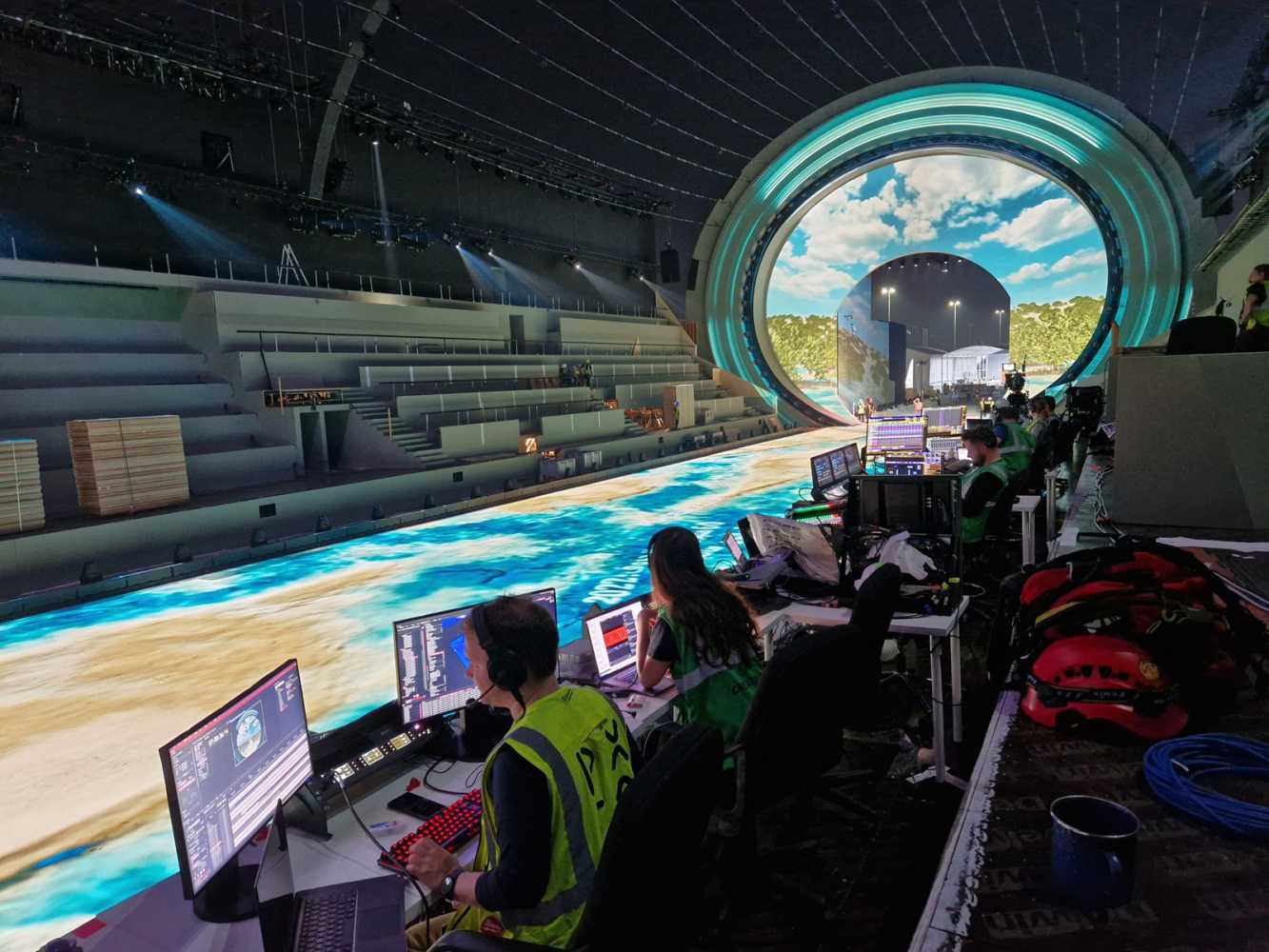TiMax transforms UAE’s National Day Celebrations
- Details

TiMax SoundHub spatial processing was specified by event sound designer Scott Willsallen for its ability to control and place the show’s many diverse audio sources, which included live orchestra, music playback as well as spatialised soundfield effect elements, to support the action provided by projection mapping, lighting, actors, processions and floats.
The unique capabilities of TiMax were essential to link the sounds associated with the moving performance to the scenic media elements as the procession travelled through, including parts of the musical score from a playback server, as well as spot sound effects from TiMax.
The transparent dynamic delay-matrix strengths of TiMax enabled the roving spatialisation to work seamlessly, within its magnificent scale and size, for the whole audience and with tightly synchronised timings with the various musical and visual elements.
To program movement against the music playback’s audio timeline, individual stem tracks were temporarily imported into TiMax so that movement and spatialisation of external server content could be programmed directly against the audio waveforms.
For the soundfield effects elements of the show, individual effects stems were imported to and played back from the TiMax SoundHub’s own on-board 64-channel playback engine for spatialisation within the show.
A distributed system of 26 groundstacked and 26 flown L-Acoustics speakers, supported by four end arrays and distributed sub bass units, was loaded into the geometrically aware TiMax PanSpace. One of TiMax’s most revered features, PanSpace automatically and selectively calculated the levels and delays for the different layers of TiMax Image Definition objects, defined to suit various combinations of spatial scenarios required for the show.A set of spatial pans, programmed in the PanSpace environment were collected into templates to be copied and pasted over the audio waveforms in the TimeLine environment. This action allowed synchronisation to be applied quickly within specific Cues as they arose during technical rehearsals. This flexible workflow approach was vital to allow for content changes and creative production variances to be accommodated at short notice.The sound control room was located remotely from the arena space, so to accommodate this, dedicated TiMax outputs were allocated to provide control room spatial monitoring that matched the spatial placements and movements of content in the actual arena.A separate networked TiMax client control computer was located at the arena space during rehearsals. Using this computer, Scott Wilsallen and OutBoard’s Robin Whittaker, on-site in Abu Dhabi to assist with TiMax setup and spatial programming, audited and selected the most effective spatial events for hard programming into the show. The consequent TiMax cues were assigned OSC commands to be triggered from the main show playback server.Robin Whittaker observed: “It was great to be involved with a production of such magnitude and significance, and with the invaluable support of the Agora and Auditoria audio teams. And thankfully the flexible TiMax workflow made it easy to rapidly program and audition highly-effective spatial events to meet the show’s fluid and diverse creative challenges as they arose.”
















